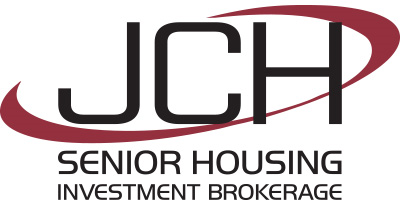Published in Wealth Management Real Estate’s 2023 Market Outlook
December 29, 2022
The senior housing sector is broken into Skilled Nursing, Assisted Living/Memory Care, Independent Living and Active Adult. Skilled Nursing and Assisted Living/Memory Care facilities are licensed and aid with activities of daily living. While Independent and Active Adult are not licensed and are more amenity focused and lifestyle oriented.
As the Senior Housing Sector looks forward to 2023, concerns about the economy, interest rates, higher food, insurance and labor costs are prevalent.
Skilled Nursing Facilities:
Despite all other indicators such as increased costs of labor and insurance, coupled with regulatory factors makes this a much tougher asset to own and operate. There seems to be an ongoing unexplainable creep in SNF prices. This may be due, in part, to the lack of new construction for many years. Private Equity and REITs partner with operators with a track record of turning around facilities and are the most common buyers in today’s market. We anticipate this trend continuing into 2023.
Assisted Living/Memory Care:
The good news here is that census is continuing to rebound from the drastic census declines caused by the pandemic. Senior Housing operators are raising their rents 7-15%, depending on market and community, thereby improving the quality of their revenue stream. Revenues are equal to or better than pre-pandemic revenues, while profit margins continue to be pinched by higher labor, insurance, agency, and raw food costs. Many operators are optimistic that, moving forward, they do not anticipate a significant continued increase in labor expenses.
Independent Living & Active Adult
Independent living facilities, while similar in design to assisted living, are not licensed and therefore do not assist with medication management or help with activities associated with daily living.
Active Adult communities are centered around “life-style” amenities and many apartment options. Younger, healthier seniors who are downsizing but still want to maintain their active lifestyles without the burdens of home ownership are choosing this option. Many multi-family investors looking to expand into the senior housing sector find this an attractive choice.
Summary
More deals are dying specifically due to tougher financing and high rates. Lenders are tightening their lending criteria on cash-flowing transactions, while many institutional lenders are not even considering funding value-add deals. Bridge lending, while more expensive, has been filling part of the gap. Unfortunately, they are also more closely scrutinizing transactions, making it even harder to finance those deals.
Many new senior housing assets are still struggling in their lease-up phase while established facilities haven’t regained census are being offered for sale. Unfortunately, there is a big gap between the sellers asking price and the eventual sales price. Sellers, despite lower historic margins, are expecting a big piece of the value-add upside, Lenders are no longer allowing seller pre-pandemic numbers to tell the story; therefore, sellers must adjust their expectations and understand that their current operations are the baseline for valuation in the underwriting process.
All indications are that there will be a recession in Q1/Q2 2023 driven by inflation. The Federal Reserve has already raised interest rates by 375 basis points and will likely raise them again in December of 2022. Interest rates are higher than we have seen in years. However, they are still low with many buyers planning on refinancing in the future when lending rates are more favorable. Buyers are finding many good value-add opportunities and continue to look for opportunities in this sector.
